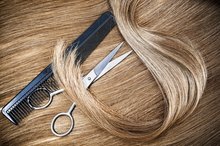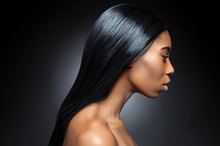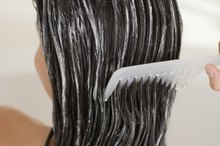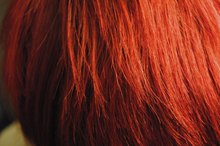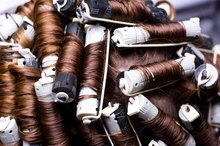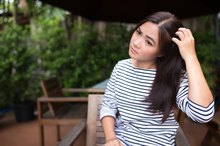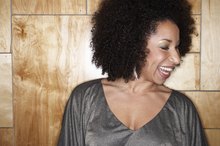The Effects of Hair Chemicals While Pregnant
Many pregnant women have questions about the safety of hair treatments. There are a myriad of hair products, each containing a variety of different chemicals. While many hair treatments are perfectly safe for both mothers and their unborn children, some are potentially dangerous and should be avoided. As such, many physicians will recommend that pregnant women avoid hair treatments altogether.
Hair Dye
Permanent hair dyes contain many chemicals that, in high doses, have been shown to cause birth defects in rats. However, very little absorption of these chemicals occurs through the scalp, so it is highly unlikely that they would affect the fetus. But, because there are no studies to indicate that these dyes are completely safe, many doctors recommend avoiding hair dyes during pregnancy, especially during the delicate first trimester.
Chemical Straightening and Curling
Can I Repair Chemically Treated Hair Loss?
Learn More
Chemical straighteners and permanent curling treatments often contain caustic chemicals, like lye, calcium hydroxide, or sodium thioglycolate, to break the chemical bonds in hair, changing its shape. Although these chemicals may irritate the scalp and damage the hair, a 1999 study published in the "American Journal of Epidemiology" indicates that the use of these products is not associated with preterm delivery or low birth weight. The study, however, did not examine the occurrence of birth defects.
Fumes
While significant quantities of the harmful chemicals used in hair treatments are not absorbed through the scalp, hair treatments often release strong chemical fumes. Permanent hair dyes often release ammonia vapors, which can irritate the respiratory tract. However, there is no evidence to suggest that exposure to ammonia can harm the developing fetus. The same is true for the chemical fumes released from straightening or permanent curling treatments.
- While significant quantities of the harmful chemicals used in hair treatments are not absorbed through the scalp, hair treatments often release strong chemical fumes.
- The same is true for the chemical fumes released from straightening or permanent curling treatments.
Hairdressers
What Are the Dangers of Relaxing Hair?
Learn More
A 2006 Danish study compared the pregnancy outcomes of hairdressers to those of the general population. This study showed no significant difference in the occurrence of miscarriage, low birth weight or birth defects between the two groups. The study found that the children of hairdressers were at no greater risk for birth defects or other impairments, even though hairdressers are exposed to the chemicals in hair treatments on a daily basis.
Pregnancy and Your Hair
Using chemical hair treatments is not likely to harm a developing baby. According to the American College of Obstetricians and Gynecologists, hair dyes are probably safe to use during pregnancy. However, no studies on the effects of occasional hair treatment use during pregnancy have been conducted. Thus, most physicians will recommend that you err on the side of caution, and avoid chemical treatments during the first trimester.
- Using chemical hair treatments is not likely to harm a developing baby.
- According to the American College of Obstetricians and Gynecologists, hair dyes are probably safe to use during pregnancy.
Related Articles
References
- "American Journal of Epidemiology"; Chemical Hair Treatments and Adverse Pregnancy Outcome Among Black Women in Central North Carolina; Blackmore-Price, C. , August 1999
- "Canadian Family Physician"; Safety of hair products during pregnancy; Chua-Gocheco, Angela.; October 2008
- Centers For Disease Control and Prevention: Public Health Statement: Ammonia
- "Scandanavian Journal of Work, Environment, and Health"; Pregnancy outcomes among female hairdressers who participated in the Danish National Birth Cohort; Zhu, JL.; January 2006
- Phillips TG, Slomiany WP, Allison R. Hair Loss: Common Causes and Treatment. Am Fam Physician. 2017;96(6):371-378.
- Watras MM, Patel JP, Arya R. Traditional anticoagulants and hair loss: a role for direct oral anticoagulants? A review of the literature. Drugs Real World Outcomes. 2016;3(1):1-6. doi:10.1007/s40801-015-0056-z
- Urysiak-czubatka I, Kmieć ML, Broniarczyk-dyła G. Assessment of the usefulness of dihydrotestosterone in the diagnostics of patients with androgenetic alopecia. Postepy Dermatol Alergol. 2014;31(4):207-15. doi:10.5114/pdia.2014.40925
- Vincent M, Yogiraj K. A descriptive study of alopecia patterns and their relation to thyroid dysfunction. Int J Trichology. 2013;5(1):57-60. doi:10.4103/0974-7753.114701
- Peters EMJ, Müller Y, Snaga W, et al. Hair and stress: A pilot study of hair and cytokine balance alteration in healthy young women under major exam stress. PLoS ONE. 2017;12(4):e0175904. doi:10.1371/journal.pone.0175904
- Pratt CH, King LE, Messenger AG, Christiano AM, Sundberg JP. Alopecia areata. Nat Rev Dis Primers. 2017;3:17011. doi:10.1038/nrdp.2017.11
- American Academy of Dermatology. Alopecia Areata: Overview.
Writer Bio
Jeremy Nicholson has been writing since 2009, specializing in human anatomy and physiology, pathophysiology, biology and tarantula care. Nicholson holds a Bachelor of Science in zoology, a Bachelor of Arts in English and a Master of Science in biology, all from Texas Tech University.
